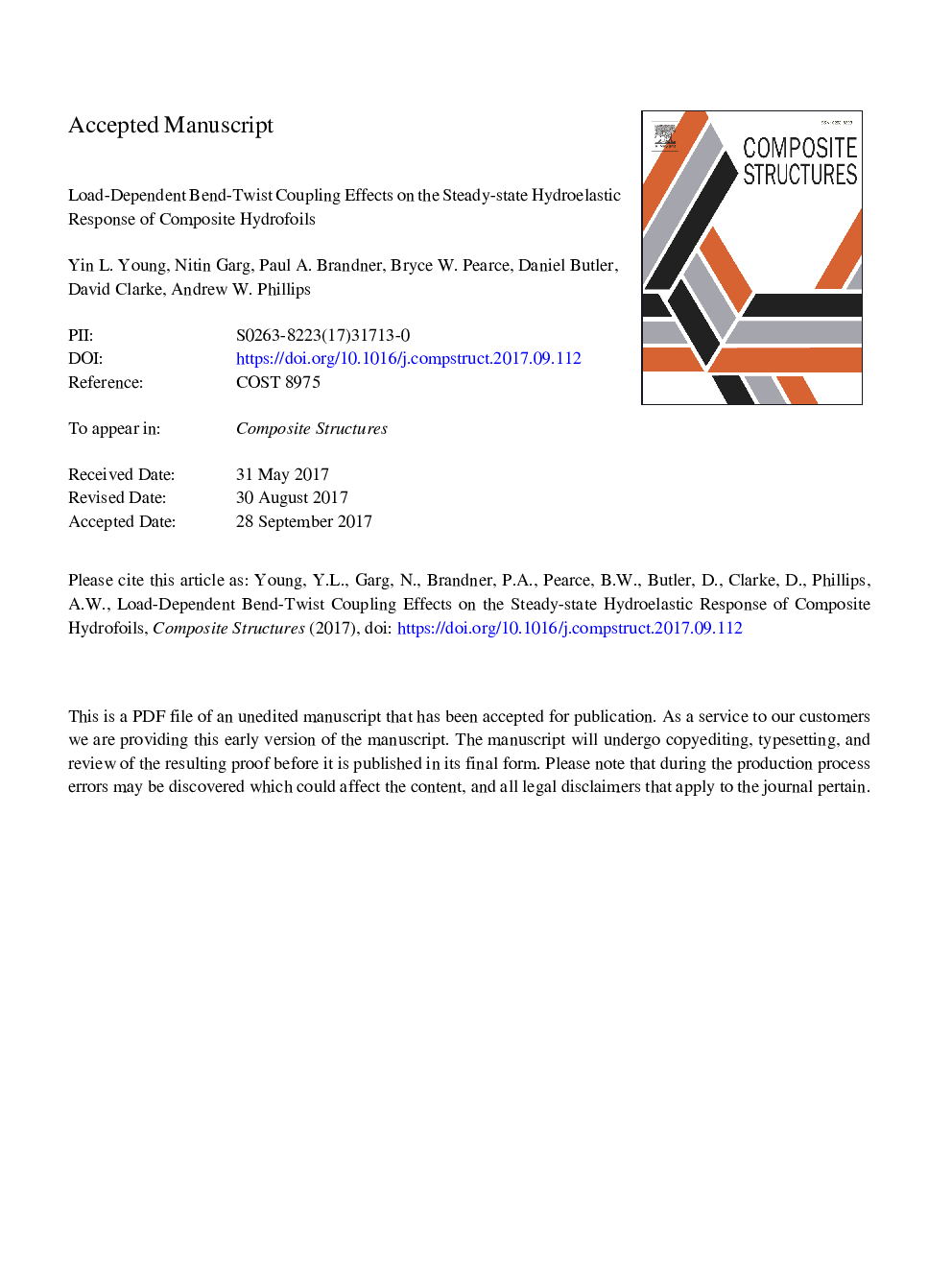| Article ID | Journal | Published Year | Pages | File Type |
|---|---|---|---|---|
| 6703996 | Composite Structures | 2018 | 47 Pages |
Abstract
The objective of this work is to present combined experimental and numerical studies of load-dependent bend-twist coupling effects on the steady-state hydroelastic response of composite hydrofoils. Experimental studies are presented for three composite and one stainless steel hydrofoils, all with the same unloaded geometry and mounted in the same cantilevered configuration. The stainless steel hydrofoil serves as the rigid baseline. The three composite hydrofoils are all made of epoxy resin reinforced with the same nominal layup of carbon fiber reinforced polymers and glass fiber reinforced polymers, with the primary difference being the orientation of the structural carbon layers relative to the spanwise axis of the hydrofoils. To compliment the experimental studies, a simple two-degrees of freedom fluid-structure interaction model is presented. The results show that material bend-twist coupling that leads to nose-up twist will experience higher hydrodynamic load coefficients, accelerated stall and static divergence, while the opposite is true for material bend-twist coupling that leads to nose-down twist. The non-dimensional hydrodynamic load coefficients for all four hydrofoils can be collapsed into the same trend line using the effective incidence, which is the geometric incidence plus the generalized tip twist angle. The results show good agreement between the experimental measurements and numerical predictions.
Related Topics
Physical Sciences and Engineering
Engineering
Civil and Structural Engineering
Authors
Yin L. Young, Nitin Garg, Paul A. Brandner, Bryce W. Pearce, Daniel Butler, David Clarke, Andrew W. Phillips,
